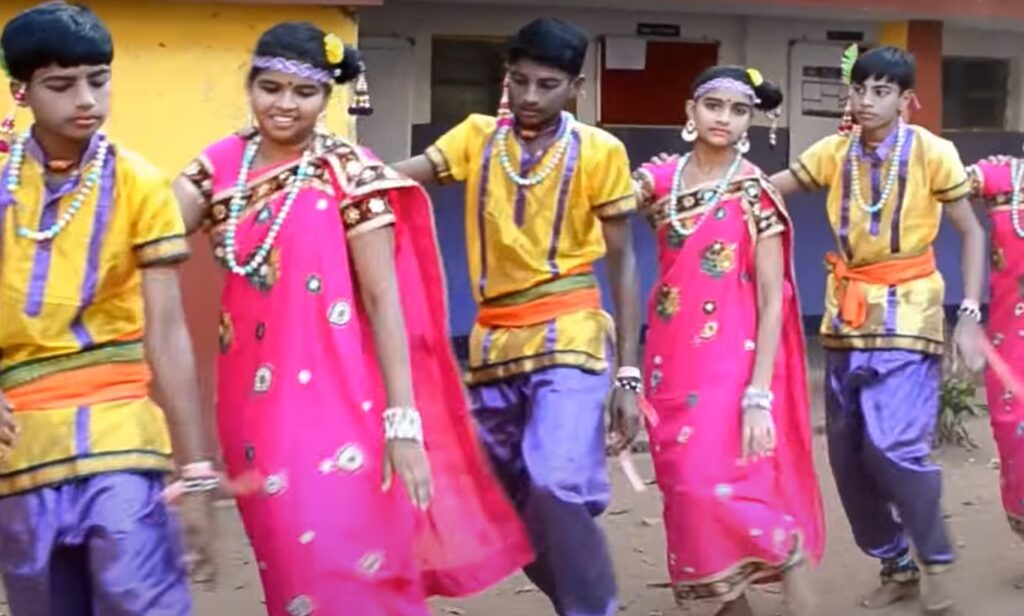Dhimsa dance is a popular folk dance of Andhra Pradesh. It is prevalent in the Araku valley near Visakhapatnam.
This folk dance is performed by the Porja tribe of Andhra Pradesh. Both men and women participate in the performance. This dance is ritualistic in nature as it is done to honor the deities and pray for peace and welfare.

Dhimsa Dance Performance
This dance is performed by a group of fifteen to twenty people. Although men can participate if they want, mainly women perform this dance. Drum-based instruments such as Dappu are used for music.
The leading lady of the dance group performs with peacock feathers in her hands which symbolizes peace. Dhimsa dance is also an important dance at weddings. Women pray for a peaceful and healthy life while performing it.
Dhimsa dance is done in a circle with each other’s arms closed at each other’s back. This dance is mainly a movement of hands and legs. Dancers form small or big circles and perform together as a team.
These simple steps include bending forward and backward, imitating picking leaves from the ground, and swinging bodies. In one form male dancers dance with peacock feathers in their hands and invite female dancers to dance with them.
A combined effort by all participants is required for a great performance. This dance requires patience and disciplined body movements.
Dance Costume
During the performance of the dhimsa dance, women wear plain colorful sarees. They wear what they wear in daily life. No special costume is required for the dance.
The frequently used colors by women are green red, pink, orange, etc. In ornaments, they only wear some tribal jewelry on the neck.
Dhimsa Dance Forms
Dhimsa dance originated in the Koraput district of Orissa. Subsequently, many forms became popular across the region. Some of them are listed below.
- Gunduri
- Goddi Beta
- Kunda
- Baya
- Boda
- Tola
- Mouli
- Choti
- Bag
- Bayya
- Sambhor Nisani
- Natikari
- Pathartols
- Pedda
Music And Instruments
- Dappu
- Mori
- Jodukommulu
- Tudumu
- Kiridi
With time this dance has become very popular among other communities also. The simple dance steps and melodious music attracts everyone.

Pingback: Folk Dances of India - Auchitya
Pingback: All Folk Dances of India - Auchitya